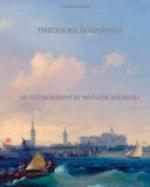The report of the National Conservation Commission was not only the first inventory of our resources, but was unique in the history of Government in the amount and variety of information brought together. It was completed in six months. It laid squarely before the American people the essential facts regarding our natural resources, when facts were greatly needed as the basis for constructive action. This report was presented to the Joint Conservation Congress in December, at which there were present Governors of twenty States, representatives of twenty-two State Conservation Commissions, and representatives of sixty National organizations previously represented at the White House conference. The report was unanimously approved, and transmitted to me, January 11, 1909. On January 22, 1909, I transmitted the report of the National Conservation Commission to Congress with a Special Message, in which it was accurately described as “one of the most fundamentally important documents ever laid before the American people.”
The Joint Conservation Conference of December, 1908, suggested to me the practicability of holding a North American Conservation Conference. I selected Gifford Pinchot to convey this invitation in person to Lord Grey, Governor General of Canada; to Sir Wilfrid Laurier; and to President Diaz of Mexico; giving as reason for my action, in the letter in which this invitation was conveyed, the fact that: “It is evident that natural resources are not limited by the boundary lines which separate nations, and that the need for conserving them upon this continent is as wide as the area upon which they exist.”
In response to this invitation, which included the colony of Newfoundland, the Commissioners assembled in the White House on February 18, 1909. The American Commissioners were Gifford Pinchot, Robert Bacon, and James R. Garfield. After a session continuing through five days, the Conference united in a declaration of principles, and suggested to the President of the United States “that all nations should be invited to join together in conference on the subject of world resources, and their inventory, conservation, and wise utilization.” Accordingly, on February 19, 1909, Robert Bacon, Secretary of State, addressed to forty-five nations a letter of invitation “to send delegates to a conference to be held at The Hague at such date to be found convenient, there to meet and consult the like delegates of the other countries, with a view of considering a general plan for an inventory of the natural resources of the world and to devising a uniform scheme for the expression of the results of such inventory, to the end that there may be a general understanding and appreciation of the world’s supply of the material elements which underlie the development of civilization and the welfare of the peoples of the earth.” After I left the White House the project lapsed.




